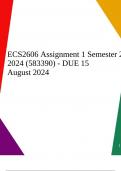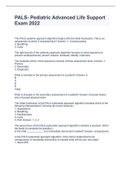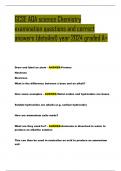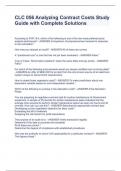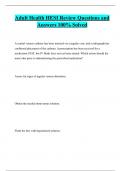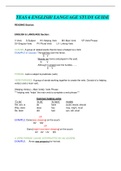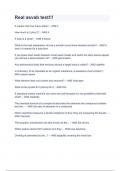Exam (elaborations)
ECS2606 Assignment 1 Semester 2 2024 (583390) - DUE 15 August 2024
- Course
- ECS2606
- Institution
- University Of South Africa
ECS2606 Assignment 1 Semester 2 2024 (583390) - DUE 15 August 2024.... 100% TRUSTED Answers, guidelines, workings, and references....1. Discuss and diagrammatically illustrate the fundamental balance principle. [10] Read the excerpt below and answer the question that follows: Africa has made si...
[Show more]
